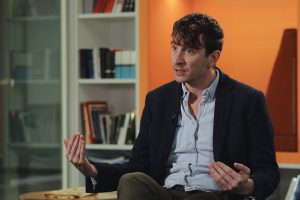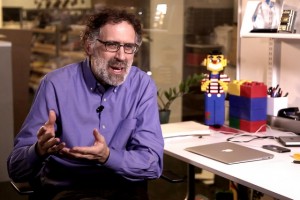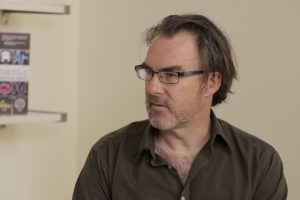Academic Freedom in Medieval Universities
Historian Peter Jones on Peter Abelard, logical analysis of the Scripture and what was the role of the univers...
What do children from low-income families really want to do? What is a ‘clubhouse village’? What are the main goals of this system? LEGO Papert Professor of Learning Research at MIT Media Lab Mitchel Resnick talks on what we can do to help children make progress in what they’re interested in.
You often hear people talk about lifelong learning – that it’s important for people to continue to learn throughout the entire life. We also like to talk about daylong learning: that is important to learn through the entire day. That learning for children doesn’t just happen while they’re in school. They continue to learn, in fact, they probably learn a lot more outside of school. Now, we want to provide ways to support kids in their learning experiences outside of school and daylong learning, especially for young people who don’t come from places where they are supported in their learning outside of school. Of course, some young people grow up in families that provide all types of opportunities for learning outside of school, but some people don’t. And we want to provide opportunities to make sure that everyone from all backgrounds was able to have this opportunity to continue to learn through the day.
Let me tell you a story about how we got started one of our daylong learning projects. It’s when we were developing to early versions of our first robotics technology. And we developed some of prototypes here at MIT. And we wanted to test it out with some kids, so we went to a local museum during the vacation week when kids were out of school and we set up our prototypes of this robotics kit to see how kids would make use of it. And during the week lots of kids came into the museum, because it was school vacation, and they tried out the robotics kit, and they made interesting things. Some things worked, some things didn’t work, it was a good learning experience for them, a good learning experience for us.
So we thought we have to provide a place for them. We could have given them free passes to the museum, but that wasn’t good enough. The museum wasn’t set up for kids to come and work on projects. So we decided to set up a separate space we called ‘a computer clubhouse’ that kids could come after school to learn to express themselves creatively with new technologies, where they could build robotic devices, they could compose their own music in a digital music studio, that they can make their own videos, they can make their own animations with new programming languages. So as a place to kids to come to do creative activities that we saw as a rich learning opportunity, but the kids wanted to come to work on these types of activities. And we designed this first computer clubhouse especially for young people from low-income communities. Kids who didn’t have these opportunities in their homes, they didn’t have computers in their homes, they didn’t have a supportive family that helped them learn how to explore with these new technologies. So they really needed a place to be able to develop a literacy with new technologies.
As we developed the first computer clubhouse, we decided that it should be based on four core principles. The first principle was that it should be based on kids learning through designing, that they should always be involved in using technology to design things. The computer clubhouse should not be a place for coming and playing games, it should be a place to come and create your own games. It shouldn’t be a place to come just to download music, but to create your own music. Not to just browse websites, but to create your own websites. So it’s a place for creating, because we knew that the best learning activities would come when kids were creating things.
The second guiding principle was that it should be a place where kids could follow their own interests. We didn’t want it to be a place where you have everybody do the same thing at the same time. We knew that kids learn best, as true for adults as well, when they work on things they are interested in, they are passionate about. When a new young person comes into the clubhouse we always ask, “What are interested in?”, you know. And that gives us an idea of what type of things they might be interested in doing in the clubhouse. If they’re interested in music, we’ll show how to use the music studio, if they’re interested in sports, we might show them how to create a website about their favorite sports team or how to make an animation or a stimulation about their favorite sport. So it’s about, you know, learning through designing, following your own interests.
The third one is working as part of a community. That we didn’t want the clubhouse just to be 20 kids each sitting in 20 different computers. We knew they’d learn the most if they worked together with one another and with other people in the community. So we set it up even in the architecture of the space to make it easy for kids to move around. We make sure they get chairs with wheels, so the kids, as they were sitting there, could easily move around to work together on projects.
We also invited in mentors from the community, volunteer mentors, people who had an expertise. It could be an artist or an architect from the community or a scientist or a musician who could come in and the kids would learn together with them. They were a part of the extended community. And we told the adults, “Don’t come just to teach kids, but work on your own projects.”
Kids are going to be most inspired if they see adults continue to learn as well. So we want to have adults working in this space and building new things.
I remember in the early days we had some graduate students come, and they were building their own robots there. And at first the kids didn’t pay attention, they just worried about their own things, but then the kids came over and said, “What’s that you doing?” or “How did you do that?” and gradually became apprentices to this robotics project. So we saw as a type of emergent community: we didn’t assign kids to work on teams, but they sort of out of their own interests start connecting with other kids and adults as part of the community of learners.
The fourth guiding principle is we want to create environment of respect and trust. Now, you might think that’s just because we want kids to have good manners in the way they interact, and, of course, that’s partly important. But there’s a bigger reason. We knew that if kids are really going to learn in this space, they have to take risks, they have to try new things. And if you take risks you often fail, things go wrong, you make mistakes. And when you make a mistake, if somebody is going to make fun of you and ridicule you, you’re not going to take risks again. So that’s why it’s so important to have an environment of respect and trust, where people are going to support one another. So you don’t have to worry, if something goes wrong, that somebody is going to make fun of you.
So with these guiding principles of learning through designing, following your interests, you know, participating in a community, respect and trust, we developed this clubhouse and it became a community where young people work creatively, you know, exploring and experimenting with new technologies.
Now as it expands, it keeps opening up new challenges and new opportunities. So the same way that we wanted collaboration inside one clubhouse in the beginning, now we want collaboration among the hundred clubhouses. So we’ve developed an online clubhouse village, where people of the different clubhouses share ideas back and forth and pose their projects to learn from one another.
So we see this is a place where people from all different backgrounds, all different interests can be able to build on those interests, to be able to develop both the skills, but also the confidence to be active participants in today’s society. We see there are lots of young people from low-income communities who come to the clubhouses. Many of them feel marginalized in today’s society, they feel on the fringe, they feel that they are never going to fit in, that their families have really been fully integrated into the mainstream culture, into the economic system. At the clubhouse they start to see how they are able to be active contributors, to develop the skills and the confidence and the creative know how, where they can be active participants. In the society, they will demand both technological skills and creative skills like never before, but the computer clubhouses help prepare young people to be sort of active contributors at a lead of a rich and fulfilling life.
In the clubhouses we often feel that it’s important to have events, sort of culminating events, where people can show off what they’ve created. Because people like to have an audience for what they have done, to get feedback from others, to see what they’ve done. These events can take different forms: sometimes they can take the form of a competition, you know, like a robot competition, where people make robots and see how their robot performs, you know, against someone else’s robot. In other case it might be an exhibition, where different people make something and like in opening of an art exhibit, where people come, and they get feedback from people who see the different things that they’ve created in the exhibition.
I think what’s most important is for people to be able to share their creations, get feedback from others, reflect on the feedback from what they’ve done, and then get new ideas. But I think I can come in many different forms, so in the clubhouse, I think, different kids are going to get their feedback and reflection in different ways. In some cases through competitions, in some cases through exhibition, but always by sharing with one another and getting idea from one another.
One thing that really struck us in the clubhouses is that there are many young people, who’ve been traditionally unsuccessful in school, who are very successful in computer clubhouses.
Kids, who their teachers say that the kids don’t have any attention span, will come and work for three hours straight on a project that they really care about.
So we sometimes have teachers who come and visit the clubhouse, and they are shocked by the student, who was falling asleep in class, is actively engaged in doing things in the clubhouse. So they see: if we provide young people with the opportunity to work on things they care about, they are often willing to work very hard.
In my mind, there’re many lessons from the clubhouse that could influence schools. I think schools could learn a lot from clubhouses. Now I think we’re different settings for learning different things, we need different types of educational set ups. But I think oftentimes schools are rigidly setup to support one type of learner and one type of learning experience. I think we have to broaden the type of learning experiences. Because right now schools aren’t succeeding for many young people. A clubhouse shows a different path that can help many young people reach their capabilities and develop their confidence in ways that aren’t working in schools. So I think there is a lot of lessons we can learn from clubhouses, both for other community centers, for homes, lessons for parents, but also lessons for how we can make schools be able to reach more broadly to the interests of all different kids from all different backgrounds.

Historian Peter Jones on Peter Abelard, logical analysis of the Scripture and what was the role of the univers...

Professor Mitchel Resnick on the kindergarten style of education, creative learning spiral, and challenges of ...

Art historian Jeffrey Taylor on the art market, the ‘American Leonardo’ and why connoisseurship doesn't work i...